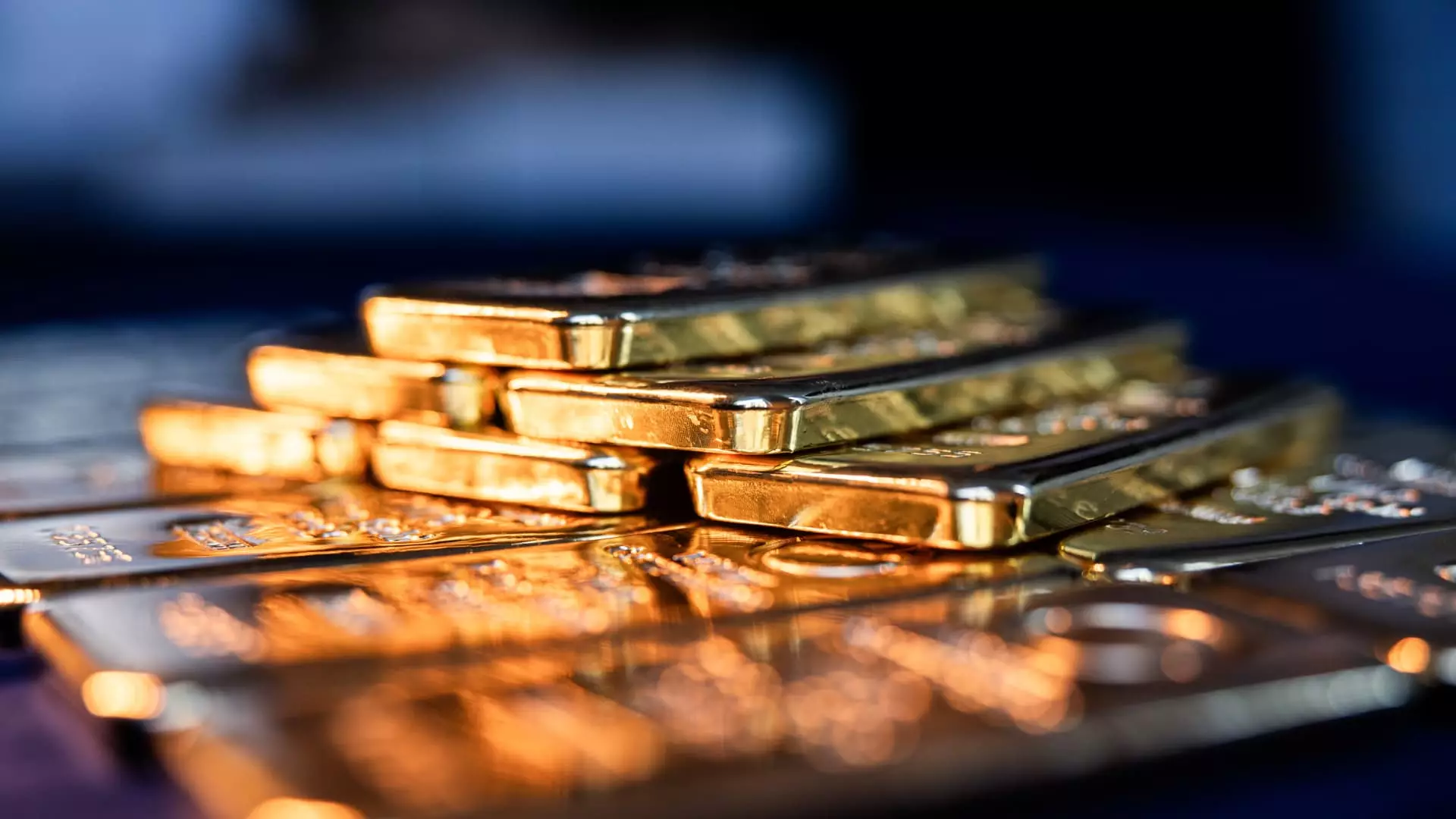In a fluctuating economy fraught with uncertainty, gold consistently emerges as a tempting beacon of security for investors. This precious metal traditionally thrives during political strife and systematic instability. However, as recent happenings suggest, investing in gold can be as perilous as it is attractive. The prevailing sentiment among analysts indicates that the current surge in gold prices may reflect overheated optimism, leading to potential disappointment for latecomers. While it may seem prudent to dive headlong into gold as a hedge against recession fears, one must consider the nuanced landscape laying beneath its golden glitter.
The Illusion of Safety in Troubling Times
According to Sameer Samana, head of global equities and real assets at Wells Fargo, we might be experiencing a pivotal moment for gold prices, aligning with historical peaks. With gold consistently setting record highs—now trading above $3,000 per ounce—it entices investors during troubling financial times. Yet, this surge raises critical questions about sustainability. Just because gold is experiencing a price rally does not indicate it will maintain that momentum indefinitely. Buying gold now risks the investor arriving late to the metaphorical party, possibly falling victim to an impending market correction when reality reasserts itself.
The logic driving many investment decisions is often steeped in fear—a desire to find “safe havens” amidst economic storms. However, this line of thinking can lead investors astray. Market dynamics seldom align so neatly; they reflect a complex interplay of variables, including domestic tariffs, geopolitical tensions, and market sentiments that can dry up the allure of gold at any moment.
Tariffs and Their Unintended Consequences
The Trump administration’s recent tariffs, particularly on imports from China, have agitated global markets and heightened fears of a trade war. These policies lead to a cyclical response where both countries retaliate with further tariff hikes, undermining economic stability. In this context, gold appears to be a refuge, spiking by about 21% in 2025 partly due to growing investor concern. However, one must consider whether these fears reflect genuine market conditions or are merely a manifestation of speculative trading responses to the impending uncertainty.
While President Trump’s political maneuvers may superficially benefit gold prices in the moment, they can also set a precarious stage for long-term investments. High tariffs provoke a reactionary economy, potentially tipping it into a recession that may ultimately diminish the value of gold as a reliable store of wealth during downturns. If the goal is a balanced financial approach, then over-concentration in gold becomes questionable.
The Gold ETF vs. Physical Gold Quandary
For investors contemplating their exposure to gold, the route often taken is via gold-backed exchange-traded funds (ETFs) rather than direct purchases of the physical metal. Analysts recommend keeping gold exposure within a modest range—up to 3%—of an overall portfolio, providing a level of diversification without disproportionately risking financial stability. However, the choice between gold ETFs and physical gold is laced with nuances that could contradict investor intentions.
Physical gold can act as “financial insurance,” offering tangible value during uncertain times. Yet, the logistical challenges associated with physical holdings—storage, insurance, and potential liquidation hassles—often render it a less attractive option. According to Tim Schmidt, founder of Gold IRA Custodians, consumer interest in physical gold has surged as tangible assets become appealing again. Despite this, unless a complete collapse of the financial system is anticipated, holding physical gold may not be the panacea many hope it to be.
The Human Element of Investment
Investing in high-quality gold jewelry adds another dimension to the consideration. With its intrinsic value tied to craftsmanship, gold jewelry can also double as an investment if selected wisely. Major luxury brands such as Cartier and Tiffany & Co. provide both aesthetic enjoyment and potential financial appreciation, reflecting the deeply-rooted human propensity for valuing tangible assets. In periods of economic turbulence, the psychological comfort of possessing something “real” could be a driving force behind investments in these items.
Conversely, the idea of investment can evolve into an emotional safety blanket. The allure of owning gold, whether in coins, bars, or jewelry, is often an emotional response to financial insecurity. Yet, financial advisors like Winnie Sun advocate for a more rational approach—maintaining high cash reserves, funding emergency savings, and thus remaining flexible to navigate an unpredictable financial landscape.
While gold remains a popular choice for savvy investors panicking over economic change, the reality is much more complex and varied than it appears. Balancing emotional inclination with rational financial strategy is key to making informed decisions on investments. Ultimately, while investing in gold can yield substantial returns, it should be approached with a healthy dose of skepticism and awareness of underlying market fluctuations.

